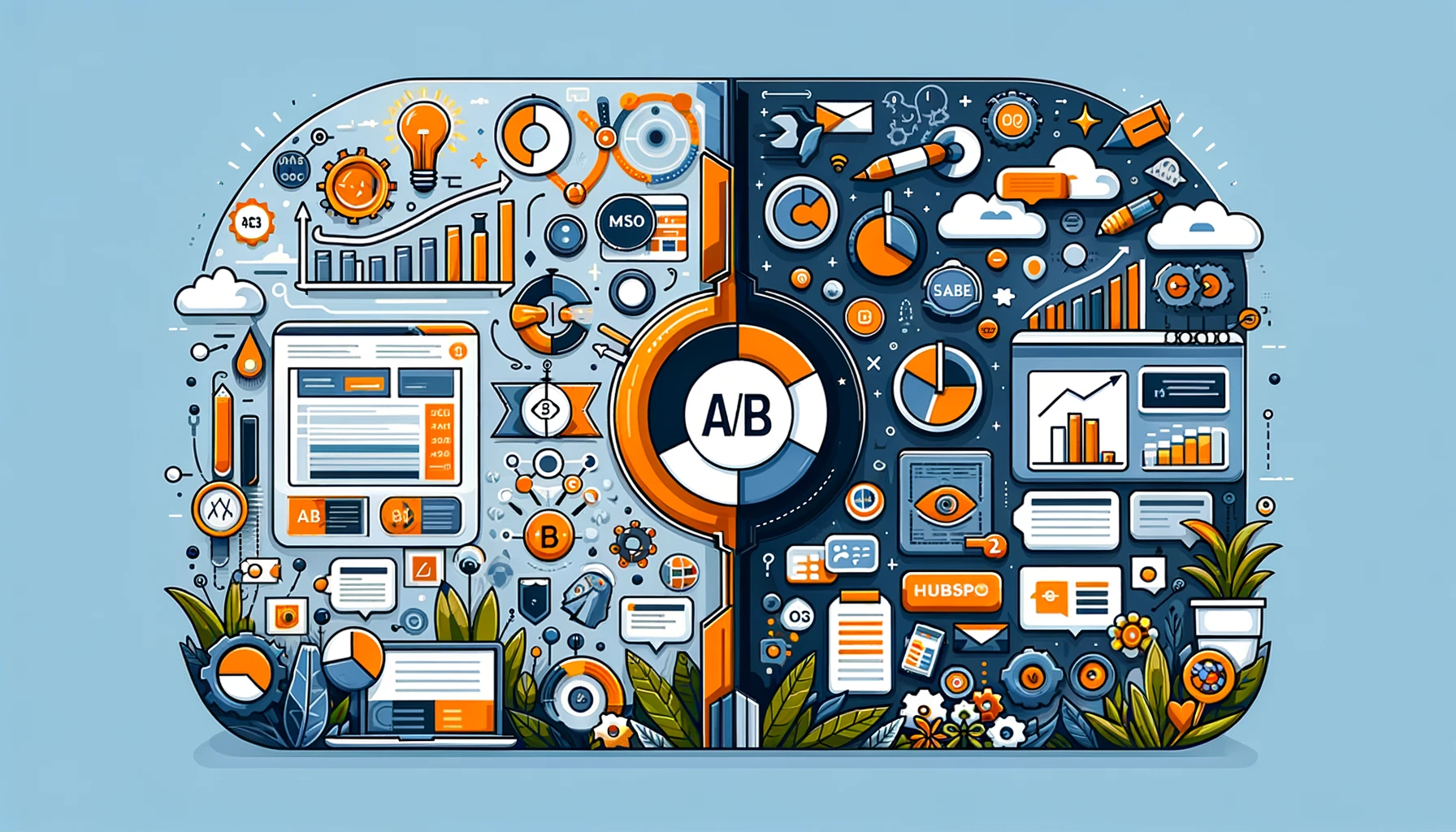In the world of digital marketing, A/B testing is a critical tool for success. It provides valuable insights into customer preferences and behavior by comparing two versions of a webpage or email to see which one performs better. HubSpot, with its suite of inbound marketing tools, is an excellent platform for conducting these tests effectively. In this guide, we will take you through the essential steps to execute the perfect A/B test using HubSpot.
Step 1: Define Your Objective
The initial step in conducting an A/B test is to determine the desired outcome. This could include improving the rate of email opens, increasing click-through rates on a website, or enhancing the number of form submissions received. Having a specific and measurable objective in mind is crucial for creating a focused and effective test.
Step 2: Choose Your Variable
After you have set your goal, choose the variable that you want to test;
- Layout: Testing different layouts can show how user engagement varies with changes in navigation, content placement, or overall aesthetic. A more intuitive layout might improve user experience and conversion rates.
- CTA’s (Call to Action): Different wording, placement, or design of CTAs can significantly impact click-through rates. Testing helps identify the most compelling CTAs for your audience.
- Content Offers: Offering different types of content (e.g., ebooks vs. webinars) can attract different segments of your audience, helping to identify which offers are most effective in driving engagement or conversions.
- Color: Colors can influence emotions and actions. Changing colors of buttons or key elements might increase visibility and engagement.
- Size: The size of elements like buttons, text, or images can impact user interaction and conversion rates. Larger elements might be more noticeable, prompting more user actions.
- Email Subject Line: Different subject lines can significantly affect open rates. A/B testing helps find the most effective phrasing to grab attention.
- Headlines: The headline is often the first thing a user reads. Testing different headlines can reveal what resonates best with your audience, potentially increasing engagement and retention.
- Sender: Changing the sender name in emails (e.g., company name vs. CEO's name) can affect open rates, as recipients may respond differently based on perceived sender credibility or relevance.
- Pricing: Testing different pricing structures (e.g., subscription vs. one-time payment) can help determine the most attractive pricing model for your customers.
- Copy Length: The length of your content might affect user engagement. Shorter copy might be more digestible, whereas longer copy can provide more detailed information.
- Tone: The tone of your message (professional, casual, humorous) can significantly impact how your audience perceives your brand and responds to your messaging.
- Images: Different images can evoke different emotions and reactions. Testing various images helps identify those that best capture attention and convey your message.
- Timing: The time of day or week when emails are sent or ads are displayed can affect engagement rates. Testing helps find the optimal times for reaching your audience.
- Frequency: Testing how often you send emails or post on social media can help find a balance that keeps your audience engaged without overwhelming them.
- Forms: Varying the length and types of fields in forms can impact completion rates. Shorter forms might have higher completion rates, but longer forms might gather more detailed information.
- Personalization: Personalizing content to the recipient (using their name, referencing past interactions) can make communications feel more relevant and engaging, potentially increasing conversion rates.
Keep in mind that to obtain accurate test results, you should only test one variable at a time.
Step 3: Create Your Variants
After identifying your variable, create two versions: the control (A) and the variant (B). In HubSpot, this is easily managed within their content creation tools. Ensure that the two versions differ only in the one aspect you're testing.
Step 4: Segment Your Audience
Segmenting your audience is crucial. You want to ensure that each segment is as similar as possible in terms of behavior and characteristics. HubSpot's segmentation tools allow you to divide your audience effectively, ensuring a fair test.
Step 5: Determine Your Sample Size and Test Duration
Decide on the number of participants and the duration of your test. This will largely depend on the traffic you receive and the conversion rates you typically see. HubSpot offers analytics tools to help you make an informed decision on sample size and test duration.
Step 6: Run the Test
To launch your A/B test, you can use HubSpot's easy-to-use tools that allow you to set up and monitor your test. It is important to run your test for a sufficient period of time to gather significant data. However, it is also important to be cautious of running it for too long, as this could lead to skewed results due to external factors.
Step 7: Analyze the Results
Once your test is complete, it's time to analyze the results. HubSpot's analytics will provide you with detailed reports on the performance of each variant. Make sure to look for any statistically significant differences in the performance of A and B, relative to your defined objective.
Step 8: Implement Findings
Once you have completed your analysis of the two variants, it is time to implement the version that performed better. If variant B outperformed variant A, then make the necessary changes and replace A with B as the new standard.
If no definitive result favors one variant over the other, it is recommended to re-evaluate the parameters of your test or the variable you selected. This reassessment can help you identify areas for improvement in the testing process and enable you to obtain more conclusive results in the future.
Step 9: Iterate and Optimize
It's important to view A/B testing as an ongoing process and use insights from each test to refine strategies and conduct further tests. Continuous testing leads to continuous improvement.
Step 10: Document and Share Learnings
It is extremely important to maintain a record of all the discoveries made during an A/B test and share them with your team members. HubSpot's collaborative tools are an excellent way to distribute reports and insights, enabling everyone to benefit from the knowledge gained during the testing phase.
Expert A/B Testing Guidance from The Gist
A/B testing is a powerful technique that helps businesses understand their audience better and improve their marketing efforts. As you embark on your journey of continuous improvement through A/B testing, keep in mind that The Gist is here to support you. Our Inbound Marketing Solutions are designed to amplify your digital marketing efforts, helping you attract, engage, and delight customers. Explore our services today, and let us assist you in unlocking the full potential of your marketing strategies.
Transform your marketing today. Reach out to The Gist for expert guidance and support in leveraging HubSpot to its fullest potential.





.png)
.png)